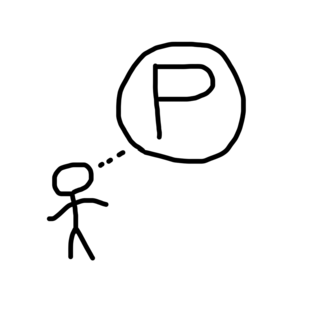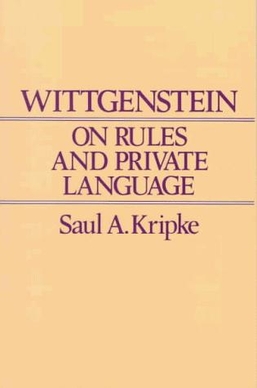Related Research Articles

George Edward Moore was an English philosopher, who with Bertrand Russell, Ludwig Wittgenstein and earlier Gottlob Frege was among the initiators of analytic philosophy. He and Russell began deemphasizing the idealism which was then prevalent among British philosophers and became known for advocating common-sense concepts and contributing to ethics, epistemology and metaphysics. He was said to have an "exceptional personality and moral character". Ray Monk later dubbed him "the most revered philosopher of his era".

Philosophical Investigations is a work by the philosopher Ludwig Wittgenstein, published posthumously in 1953.
Truth or verity is the property of being in accord with fact or reality. In everyday language, truth is typically ascribed to things that aim to represent reality or otherwise correspond to it, such as beliefs, propositions, and declarative sentences.

The Tractatus Logico-Philosophicus is the only book-length philosophical work by the Austrian philosopher Ludwig Wittgenstein that was published during his lifetime. The project had a broad goal: to identify the relationship between language and reality, and to define the limits of science. Wittgenstein wrote the notes for the Tractatus while he was a soldier during World War I and completed it during a military leave in the summer of 1918. It was originally published in German in 1921 as Logisch-Philosophische Abhandlung. In 1922 it was published together with an English translation and a Latin title, which was suggested by G. E. Moore as homage to Baruch Spinoza's Tractatus Theologico-Politicus (1670).
Analytic philosophy is a broad, contemporary movement or tradition within Western philosophy and especially anglophone philosophy focused on analysis.
Fideism is a term used to name a standpoint or an epistemological theory which maintains that faith is independent of reason, or that reason and faith are hostile to each other and faith is superior at arriving at particular truths. The word fideism comes from fides, the Latin word for faith, and literally means "faith-ism". Philosophers have identified a number of different forms of fideism. Strict fideists hold that reason has no place in discovering theological truths, while moderate fideists hold that though some truth can be known by reason, faith stands above reason.
Nonsense is a communication, via speech, writing, or any other symbolic system, that lacks any coherent meaning. In ordinary usage, nonsense is sometimes synonymous with absurdity or the ridiculous. Many poets, novelists and songwriters have used nonsense in their works, often creating entire works using it for reasons ranging from pure comic amusement or satire, to illustrating a point about language or reasoning. In the philosophy of language and philosophy of science, nonsense is distinguished from sense or meaningfulness, and attempts have been made to come up with a coherent and consistent method of distinguishing sense from nonsense. It is also an important field of study in cryptography regarding separating a signal from noise.

A propositional attitude is a mental state held by an agent or organism toward a proposition.
Dialetheism is the view that there are statements that are both true and false. More precisely, it is the belief that there can be a true statement whose negation is also true. Such statements are called "true contradictions", dialetheia, or nondualisms.
Logical atomism is a philosophical view that originated in the early 20th century with the development of analytic philosophy. It holds that the world consists of ultimate logical "facts" that cannot be broken down any further, each of which can be understood independently of other facts.

Wittgenstein on Rules and Private Language is a 1982 book by philosopher of language Saul Kripke in which he contends that the central argument of Ludwig Wittgenstein's Philosophical Investigations centers on a skeptical rule-following paradox that undermines the possibility of our ever following rules in our use of language. Kripke writes that this paradox is "the most radical and original skeptical problem that philosophy has seen to date" (p. 60). He argues that Wittgenstein does not reject the argument that leads to the rule-following paradox, but accepts it and offers a "skeptical solution" to alleviate the paradox's destructive effects.

Kaarlo Jaakko Juhani Hintikka was a Finnish philosopher and logician. Hintikka is regarded as the founder of formal epistemic logic and of game semantics for logic.
A performative contradiction arises when a speech-act rests on non-contingent presuppositions that contradict the proposition asserted in that speech-act.
Semantic holism is a theory in the philosophy of language to the effect that a certain part of language, be it a term or a complete sentence, can only be understood through its relations to a larger segment of language. There is substantial controversy, however, as to exactly what the larger segment of language in question consists of. In recent years, the debate surrounding semantic holism, which is one among the many forms of holism that are debated and discussed in contemporary philosophy, has tended to centre on the view that the "whole" in question consists of an entire language.
In philosophy—more specifically, in its sub-fields semantics, semiotics, philosophy of language, metaphysics, and metasemantics—meaning "is a relationship between two sorts of things: signs and the kinds of things they intend, express, or signify".
Daniel Kolak is a Croatian-American philosopher who works primarily in philosophy of mind, personal identity, cognitive science, philosophy of science, philosophy of mathematics, philosophy of logic, philosophy of religion, and aesthetics. He is professor of philosophy at the William Paterson University of New Jersey and an Affiliate of the Rutgers University Center for Cognitive Science (RuCCS). Kolak is the founder of the philosophical therapy known as cognitive dynamics.
The preface paradox, or the paradox of the preface, was introduced by David Makinson in 1965. Similar to the lottery paradox, it presents an argument according to which it can be rational to accept mutually incompatible beliefs. While the preface paradox nullifies a claim contrary to one's belief, it is opposite to Moore's paradox which asserts a claim contrary to one's belief.
The aspects of Bertrand Russell's views on philosophy cover the changing viewpoints of philosopher and mathematician Bertrand Russell (1872–1970), from his early writings in 1896 until his death in February 1970.
The disquotational principle is a philosophical principle which holds that a rational speaker will accept "p" if and only if they believe p. The quotes indicate that the statement p is being treated as a sentence, and not as a proposition. This principle is presupposed by claims that hold that substitution fails in certain intensional contexts.
References
- 1 2 Moore, G. E. (1993). "Moore's Paradox". In Baldwin, Thomas (ed.). G. E. Moore: Selected Writings. London: Routledge. pp. 207–212. ISBN 978-0-415-09853-3.
- ↑ Wittgenstein, Ludwig (1953). Philosophical Investigations. Section II.x. Blackwell Publishers. p. 190.
- ↑ Wittgenstein, Ludwig (1974). von Wright, G. H. (ed.). Letters to Russell, Keynes and Moore. Oxford: Blackwell Publishers.
- ↑ Wittgenstein, Ludwig (1980). Anscombe, G. E. M.; von Wright, G. H. (eds.). Remarks on the Philosophy of Psychology, Volume I. Translated by G. E. M. Anscombe. Oxford: Blackwell Publishers. ISBN 978-0-631-12541-9.
- 1 2 Sorensen, Roy A. (1988). Blindspots. New York: Oxford University Press. ISBN 978-0-19-824981-8.
- ↑ Hendricks, Vincent F.; Symons, John (2006). "Where's the Bridge? Epistemology and Epistemic Logic". Philosophical Studies. 128 (1): 137–167. CiteSeerX 10.1.1.330.3026 . doi:10.1007/s11098-005-4060-0. ISSN 0031-8116. S2CID 11014804.
- 1 2 Hintikka, Jaakko (1962). Knowledge and Belief: An Introduction to the Logic of the Two Notions . Cornell, NY: Cornell University Press.
- ↑ Moore, G. E. (1991). "Russell's Theory of Descriptions". In Schilpp, P. A. (ed.). The Philosophy of Bertrand Russell. The Library of Living Philosophers. Vol. 5. La Salle, IL: Open Court Publishing. pp. 177–225.
- ↑ Bovens, Luc (1995). "'P and I Will Believe that not-P': Diachronic Constraints on Rational Belief". Mind . 104 (416): 737–760. doi:10.1093/mind/104.416.737.
- ↑ Rosenthal, David (1995). "Moore's Paradox and Consciousness". AI, Connectionism and Philosophical Psychology. Philosophical Perspectives. Vol. 9. Atascadero, CA: Ridgeview. pp. 313–334. ISBN 978-0-924922-73-2.
- ↑ Shoemaker, Sydney (1996). "Moore's Paradox and Self-Knowledge". The First-Person Perspective and other essays . New York: Cambridge University Press. pp. 74–96. ISBN 978-0-521-56871-5.
- ↑ Green, Mitchell S.; Williams, John N., eds. (2007). Moore's Paradox: New Essays on Belief, Rationality and the First-Person. New York: Oxford University Press. ISBN 978-0-19-928279-1.
- ↑ Searle, John & Vanderveken, Daniel (1985). Foundations of Illocutionary Logic. New York: Cambridge University Press. ISBN 978-0-521-26324-5.
- ↑ Linville, Kent & Ring, Merrill (1991). "Moore's Paradox Revisited". Synthese. 87 (2): 295–309. doi:10.1007/BF00485405. S2CID 46960203.
- ↑ Moran, Richard (2001). Authority & Estrangement: An Essay on Self-knowledge. Princeton: Princeton University Press. ISBN 978-0-691-08944-7.